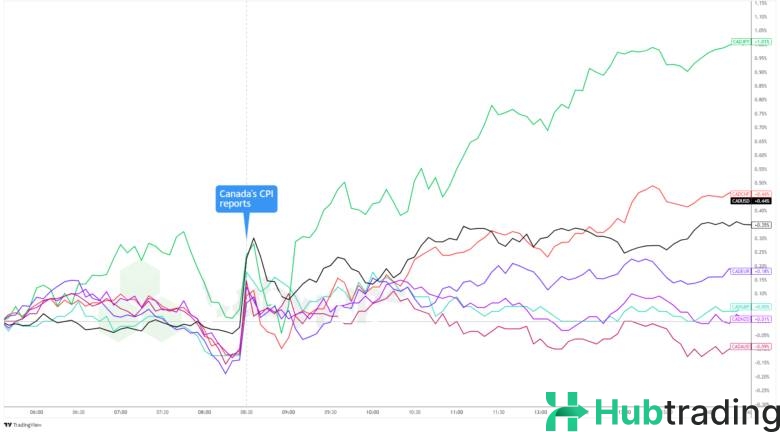Canada's headline inflation rebounded in October, with the Consumer Price Index (CPI) rising 2.0% year-over-year, up from September’s three-year low of 1.6%. This return to the Bank of Canada’s (BOC) target rate was mainly driven by a more modest decline in gasoline prices.
On a monthly basis, the headline CPI climbed 0.4% in October, reversing the 0.4% drop seen in September. Core CPI also rose by 0.4%, significantly higher than September’s 0.0% and the anticipated 0.1% increase.
The BOC’s preferred core inflation measures also showed notable accelerations:
- Trimmed CPI rose to 2.6%, up from 2.4% in September.
- Median CPI increased to 2.5% from 2.3%.
- Common CPI edged up to 2.2% from September’s 2.1%.
Additional insights from the report include:
- The all-items CPI excluding gasoline remained steady at 2.2% year-over-year for the third consecutive month.
- Goods prices saw a slight annual increase of 0.1%, recovering from September’s 1.0% drop.
- Services inflation eased to 3.6%, marking the slowest yearly increase since January 2022.
Key drivers of the acceleration in headline CPI included:
- Gasoline prices falling at a slower rate (-4.0%) compared to September’s sharper decline (-10.7%).
- Faster growth in food prices from stores, up 2.7% versus September’s 2.4%.
- A 6.0% rise in property taxes, the highest yearly increase since 1992.
- Shelter costs easing, with a 4.8% rise compared to September’s 5.0%.
- Mortgage interest costs growing at a slower pace, increasing 14.7%, down from 16.7% in September.
Market Reactions:
![]()
The Canadian Dollar (CAD) responded positively to the inflation data, reversing early losses during a risk-off U.S. session. The prospect of inflation aligning with the midpoint of the Bank of Canada’s (BOC) 1%-3% target range could prompt a smaller rate cut in December—potentially 25 basis points instead of 50.
This outlook strengthened the CAD, which posted its largest gains against safe-haven currencies like the JPY, USD, and CHF as risk sentiment improved later in the day.
Quick recoveries against the EUR and GBP reflected market confidence in a measured approach from the BOC following the inflation report. However, the CAD lagged behind the AUD and NZD, with rising risk appetite favoring these other commodity-linked currencies.






